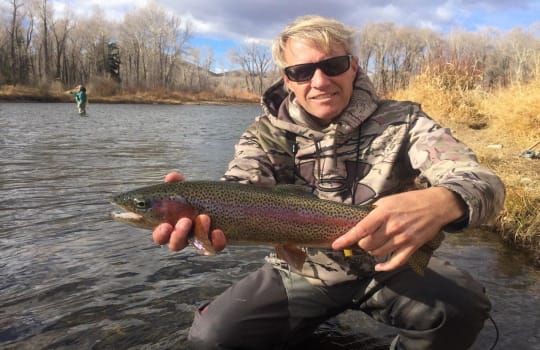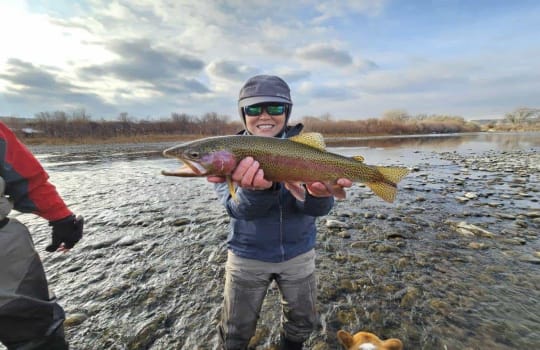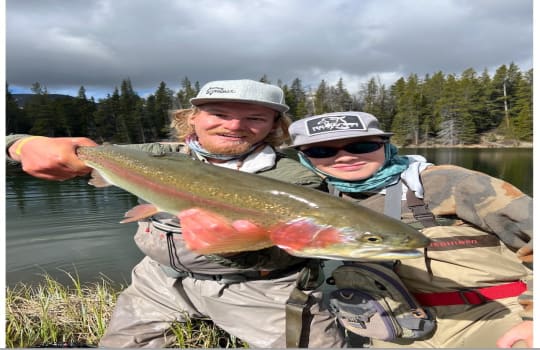LET’S PLAY BALL – Get in Position to Set the Hook!
By Ron Pecore, Professional 5280 Angler Fly Fishing Guide
Have you ever seen a shortstop get setup and ready prior to a pitcher’s delivery? More so, are you wondering what that image has to do with fly fishing? Well, as anglers we may not need to ever be in a crouch position and ready to dive for a grounder, but some of the same concepts certainly apply. Trout can strike at any time, and we need to be on our game! Read on and find out how to be in position to set the hook.
While guiding clients across the Front Range, I stress the importance of being ready and in the right position to set the hook. I instruct folks how to anticipate a pause or twitch in the indicator. In order to set the hook quickly, they have to be in what I call a “Ready to Set Position.”
Too often, anglers over-manage their drift by either mending too frequently or fiddling with excess line below the reel. Really all they need to do is to be ready to set. Back to our shortshop visual – the shortstop’s job is to be in the ready position to catch the ball and make the play. All great fielders are at the ready on the balls of their feet and ready to pounce. As the pitcher sets, winds up, and delivers, a fielder who doesn’t want to ride the bench will not be lazily shuffling their feet, adjusting their cap, or checking out the cute girl in the third row. They may do these things between pitches, but when it’s game-on pros are on their toes ready to make the play.
This hair-trigger position starts with the arm & rod – the ready nymph-fishing angler needs to be leading the indicator with the rod tip downstream so the angler can tighten the line with a quick and sharp short downstream tug. Particularly when wade fishing, a reach cast or aerial mend is all that is needed to setup a solid drift. To be a great nymph fisherman, you have to be ready to strike, not be building sandcastles with the infield dirt – not a fiddler.
When you feel compelled to mend or otherwise manage line, do it quickly and efficiently so you can get right back to the Ready Position to set the hook (Catch the Ball!). Chances to make the great play (or great catch) are precious. Don’t be caught shuffling your feet when the trout takes your fly.
Always do your mending before or after your target area (before or after the pitch) so when your rig is drifting through the prime water, your focus is singular – SET THE HOOK (Catch the Ball!).
Just like a shortstop, you never know exactly when the ball is coming your way (when the trout will strike). However, you know when the pitch is delivered (the cast is made). The play maker is ready to set the hook.
Before becoming and “All-Star” mender, be an “All-Star” hook-setter.
Work on this ready position, and I’m sure your hook ups will greatly increase!











